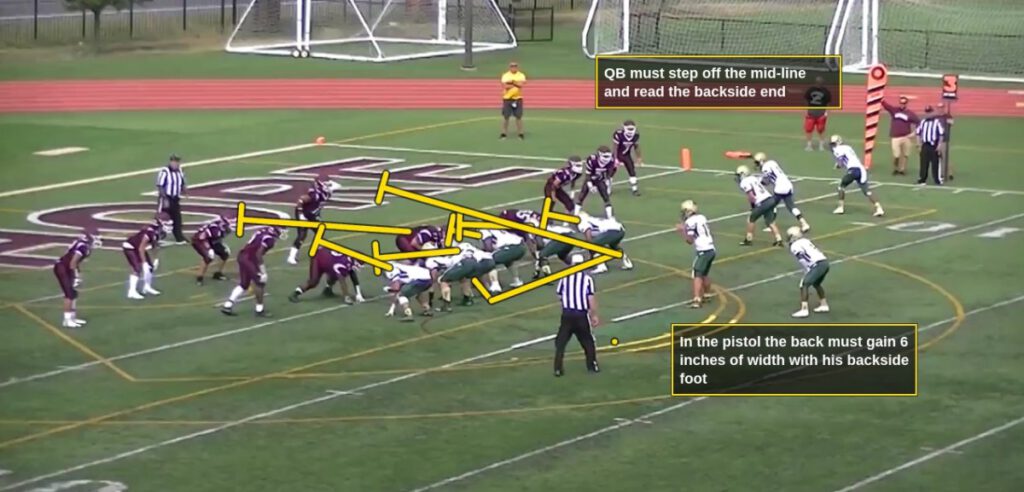By Steven Alesi
Offensive Coordinator
Longwood High School (NY)
Twitter: @CoachAlesi
Here at Longwood, our entire offense is broken down into families. In the run game, we have 4 frontside families and 4 backside families. Before teaching any concept we teach these 8 families. When teaching a concept, the players first learn which frontside and backside family the play is a part of. Each family will always have the same rules. This allows the players to immediately know the core rules of the concept based on the family it falls in. We feel that this greatly increases the player's ability to not only increase the rate in which they learn but retain more information.
Dart for us is a day 1 install. This is because of how few rules the concept has and its adaptability to so many different looks. It also provides great blocking angles and is sound vs interior pressure. It is the core of our offense and we spend a great deal of time and effort protecting this play. We also feel that it is one of the most forgiving plays in football. With the back on a tight inside aiming point and the backside puller taught to clean up any opposite color that shows up. We have found it much easier to collect those difficult run-throughs and correct any missed blocks on the line of scrimmage compared to other run concepts. This concept can be utilized as a 1 back or a multi-back concept that can also be a great compliment to many common 2-back run schemes such as power. This article will consist of many clips where we had made a mistake somewhere and we were able to sort it out and gain yards.
The OL rules are broken up into playside and backside.
Front-side Rules “Over – Down” (Man Scheme)
- Over- Block the defender over you on the line of scrimmage
- Down- Second LB play-side
Adjustments
- Minus- when every inside gap is covered playside
- Plus- when the EMLOS is double covered
Backside Rules- Assume Frontside Rules (Tackle Pull)
- Over- Down
BS Tackle Rules
- Peak pull for the first LB front-side “Backer”.
- Keep your head inside and make contact with your outside (play-side) shoulder. Near foot-near shoulder. Velocity!!
- Make your linemen right, never bypass a free defender!
The Backfield Mesh
The QB has the same footwork if the ball carrier is in the pistol or sidecar position. His primary goal is to give the back the midline and point his belt buckle at his backside read. He will step with his backside foot first and step toward the play side, pointing it at his backside read. He will next step with his play side foot squaring up to his read and reestablishing his shoulder width base. The QB will push the ball back as far as he can and make his decision by the time the ball reaches his belt buckle. The ball carrier in the pistol will take a 45-degree, 6-inch step with his backside foot and then press his aiming point of the play side hip of the center. If the A gap is open, he will hit it. If it is closed, he will get on the inside up hip of the puller and follow him into the next available gap. In the sidecar position, only the 1st step is different. The back will shuffle keeping his shoulders square and dropping his inside foot back.
Tail Back Rules
- Aiming point- playside foot of the center (inside out)
- If the frontside A gap is open hit it! If not follow your lead blocker
- 1 cut
- Expect the ball to hit inside
- If a defender comes free get downhill now and get positive yardage. No negative plays!
Fullback Rules
Since this is a 1 back run you will be tagged to block a specific player
Quarterback Rules
- Step off the midline with the backside foot
- Read the backside EMLOS unless tagged to read an interior defender









